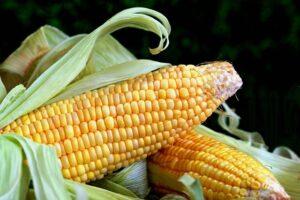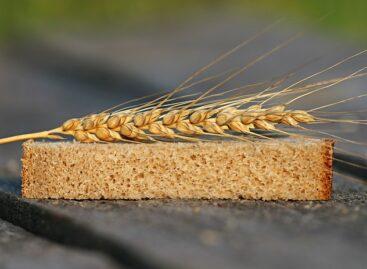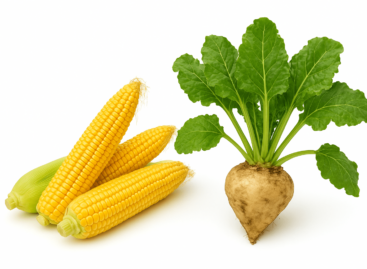Corn and soybean prices hit historic lows
American farmers face serious challenges: By July 2025, corn and soybean futures prices, adjusted for inflation, fell below their 2006 levels. Amid high production costs and intensifying international competition, farmers’ profitability has fallen dramatically, and the market remains under pressure – Agrárszektor says.
Back to the early 2000s
 On the Chicago Mercantile Exchange, corn futures in December were trading at $4.21 per bushel, down from $4.19 per bushel in 2006, adjusted for inflation. Soybeans fared no better, with November futures averaging $10.20 per bushel, also a near two-decade low. Although a slight increase began in the second half of the week, prices are still well below the February peaks, which are used as the basis for insurance guarantees by farmers.
On the Chicago Mercantile Exchange, corn futures in December were trading at $4.21 per bushel, down from $4.19 per bushel in 2006, adjusted for inflation. Soybeans fared no better, with November futures averaging $10.20 per bushel, also a near two-decade low. Although a slight increase began in the second half of the week, prices are still well below the February peaks, which are used as the basis for insurance guarantees by farmers.
Cost squeeze
The market situation is aggravated by the fact that production costs have not followed the price drop. Corn prices have fallen by 30% since mid-2022, while production costs have decreased by only 3% nationally, and even adjusted for inflation, they show a decrease of only 11%. This is especially painful for US producers, whose profit-making opportunities are narrowing.
Brazilian offensive, US export concerns
According to a Reuters report, the global share of US exporters is also decreasing: the dynamic expansion of Brazilian production and its aggressive presence in foreign markets are displacing the US from traditional export markets year after year. Global oversupply is making it difficult for prices to make a meaningful correction, especially for corn, where the United States has long been dominant.
USDA: More corn, less soybeans in stocks
According to the latest forecasts from the United States Department of Agriculture (USDA), by the end of the 2025-26 season, the ending stock of corn could increase by 24% compared to the previous year, to 1.66 billion bushels. While this is a significant annual increase, it is still far below the level of previous years: 21% lower than in the 2024-25 season and 37% lower than in the 2020-21 season.
In the case of soybeans, however, decreasing stocks can be expected: the US ending stock forecast for the 2025-26 season could be 11% lower than the previous year – this is the first such decline since 2020. This trend could provide some support to soybean prices, especially if weather forecasts for August turn unfavorable, threatening crop yields.
Related news
China would increase its grain production capacity by 50 million tons
🎧 Hallgasd a cikket: Lejátszás Szünet Folytatás Leállítás Nyelv: Auto…
Read more >Producer prices of wheat and corn have decreased – international markets are also under pressure
🎧 Hallgasd a cikket: Lejátszás Szünet Folytatás Leállítás Nyelv: Auto…
Read more >NAK: average yield of corn and sugar beet decreased due to drought in Tolna County
🎧 Hallgasd a cikket: Lejátszás Szünet Folytatás Leállítás Nyelv: Auto…
Read more >Related news
Fidelity Kitekintés 2026: Ne becsüljük alá az inflációt!
🎧 Hallgasd a cikket: Lejátszás Szünet Folytatás Leállítás Nyelv: Auto…
Read more >Company Trend 2025 – domestic businesses under strong pressure, in a negative trend
🎧 Hallgasd a cikket: Lejátszás Szünet Folytatás Leállítás Nyelv: Auto…
Read more >Surprising ordering statistics: foodora sampled the ordering habits of Hungarians in 2025
🎧 Hallgasd a cikket: Lejátszás Szünet Folytatás Leállítás Nyelv: Auto…
Read more >







